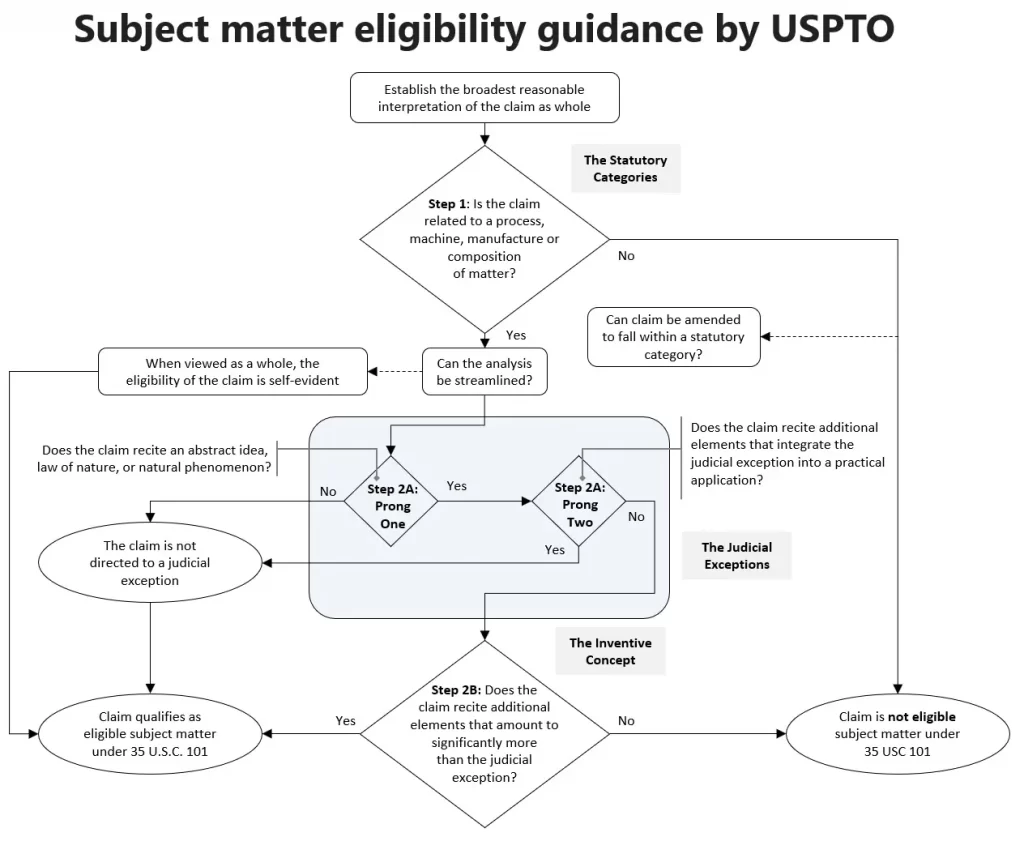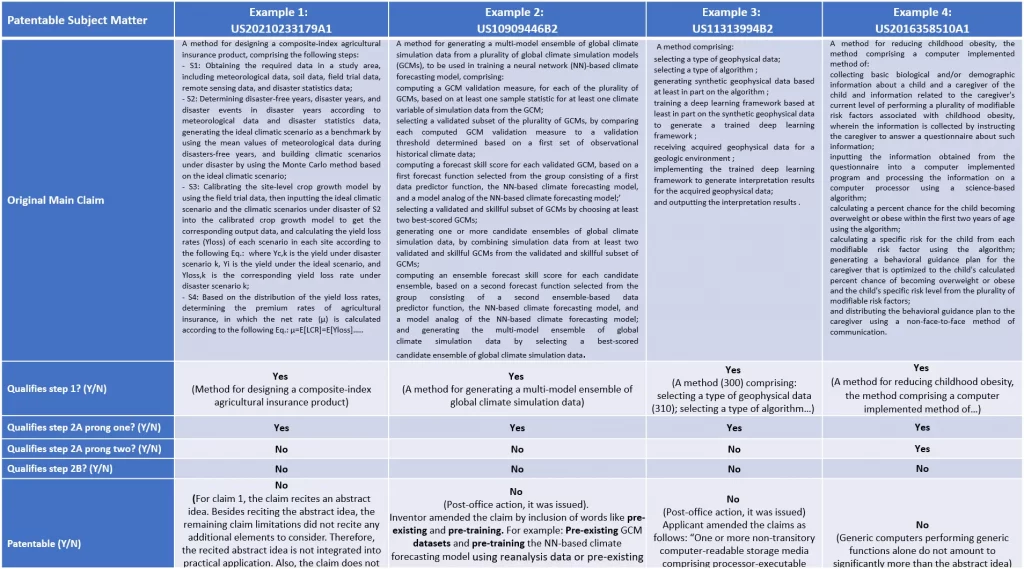A patent application encompassing mathematical calculations or software / computer-implemented technologies per se has been a matter of debate and remains unclear.
Section 101 of The United States Patent Act (35 U.S.C. 101) provides the statutory definition regarding the types of inventions eligible for patent protection –
“Whoever invents or discovers any new and useful process, machine, manufacture, or composition of matter, or any new and useful improvement thereof, may obtain a patent therefor, subject to the conditions and requirements of this title.”
However, the Supreme court has held non-statutory / judicial exceptions to the subject matter eligibility, i.e., the types of discoveries that are patent-ineligible based on the following:
- laws of nature,
- natural phenomena, and
- abstract idea
According to the above judicial exceptions, no patent may be granted to an invention solely based on the above criteria; however, any patent related to an application or process that encompasses one of the cited criteria must fall within the scope of subject matter eligibility.
Further, to distinguish an invention being patent-eligible subject matter and subject matter falling within a judicial exception, the Supreme Court has established a two-step test, known as Alice/Mayo test.
- The first step of the Alice/Mayo test analyzes whether or not the patent claims are directed to a law of nature, natural phenomenon, or abstract idea. If not, the invention is patentable.
- The second step of the Alice/Mayo test further evaluates the non-statutory / judicial exceptions and checks whether the patent claims have an inventive concept.
However, there being a need for more clarity and consistency in the application of the ‘‘abstract idea’’ exception, in 2019, the PTO issued a Revised Patent Subject Matter Eligibility Guidance to help determine subject matter eligibility for patent applications.

The critical points that are to be considered regarding patentable or not patentable subject matter u/ 35 USC § 101 are:
Step 1: Statutory categories
A claimed invention must fall within one of the four statutory categories of invention set forth in 35 U.S.C. 101, i.e., process, machine, manufacture, or composition of matter.
Step 2: The revised Step 2A involves a two-part examination.
- Step 2A prong one: Abstract ideas
Does the Claim recite an abstract idea, Law of Nature, or Natural Phenomenon?
- Step 2A prong two: Integration into application
Does the Claim recite additional elements that integrate the judicial exceptions into a practical application?
Step 2B: Significantly more
Does the claim recite additional elements that amount to significantly more than the judicial exception?
The following step-by-step approach provides guidance on the section 101 claim analysis to assess patentable subject matter.
- During the process of evaluation, if a patent application meets the criteria of Step 1 satisfactorily, it is assessed for the criteria of step 2.
- During the assessment of step 2A prong one, if no exception is found, the claim meets the eligibility criteria and the analysis concludes. However, if an exception is identified, assessment of step 2A prong two is considered.
- If the exception is successfully integrated into a practical application, the claim is considered eligible and the analysis concludes. If the exception is not effectively integrated into a practical application, the claim is deemed to be “directed to” the exception. Further analysis under Step 2B is required.
- Step 2B assessment involves assessing if extra elements, either individually or combinedly, bring about an inventive step. This means assessing if these additional elements go beyond the exception itself. Step 2B examines whether the added element(s) introduce specific limitations not considered common, routine, or conventional in the field, indicating a potential inventive concept; and if the supplementary elements significantly enhance the claim (i.e., 2B: Yes), it is eligible for a patent. If not (i.e., 2B: No), it is ineligible.
Typically, if a process under its broadest reasonable interpretation covers performance of the limitation of mathematical relationships/ modeling, it falls within the “Mathematical Concepts” grouping of abstract idea. Accordingly, the claim recites an abstract idea.
While patent applications that have failed the Alice/Mayo test have been considered as “abstract ideas”, there have been instances wherein such patent applications have been issued allowance when the claims of said applications have been modified to be presented as a “method” (Example 2) or a ‘system” (Example 3).
In other words, the “subject matter” may not be patentable subject matter unless there is a system-implemented method and can present translation to a practical output.
In order to gain a better understanding of how the patent office evaluates subject matter eligibility for such technologies, SciTech Patent Art has reviewed and analyzed the prosecution histories of a few patents.

